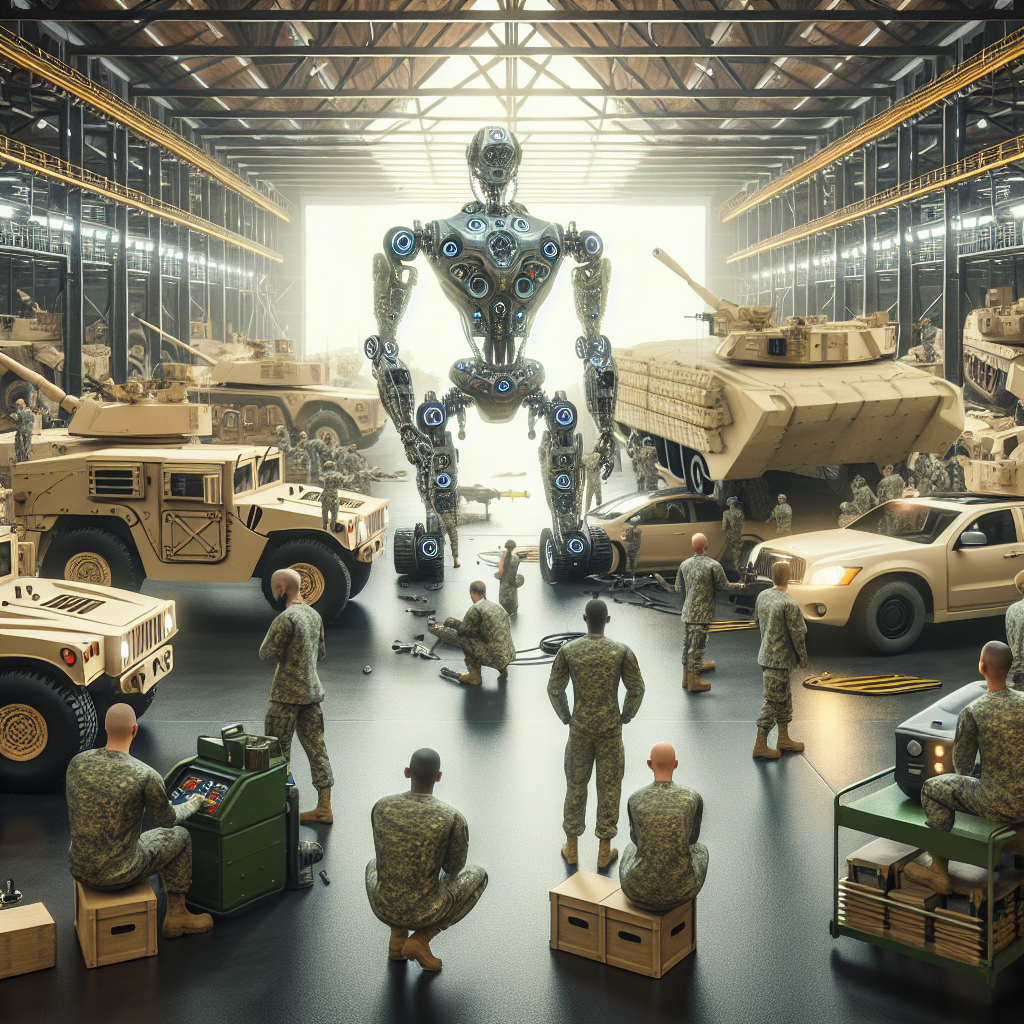
The integration of artificial intelligence (AI) into military operations is not just a futuristic concept; it is rapidly becoming a reality. The latest initiative by the Army focuses on enhancing vehicle maintenance, particularly for the Infantry Squad Vehicle (ISV), a ruggedized version of the Chevy Colorado pickup truck. With the goal of optimizing maintenance processes, the Army is engaging in a project that involves feeding hundreds of hours of video recordings into a large language model (LLM), which is expected to transform how soldiers repair their vehicles in the field.
Alex Miller, the Army’s chief technology officer, provided insights into this strategy during a recent podcast with the Washington AI Network. He articulated his vision where soldiers will utilize AI-powered smart glasses to assist in diagnosing and fixing vehicle issues. This innovative approach aims to offer real-time guidance, allowing soldiers to navigate through complex repair procedures seamlessly. The initial phase includes training the AI with approximately 1,000 hours of footage of technicians performing maintenance, which can equip soldiers with the knowledge they need when faced with mechanical failures.
One of the standout features of this initiative is its dual approach to incorporating machine learning. Miller mentioned two versions of the support tools: the Smart Lookup, which leverages machine learning, and a generative component that allows for hands-on assistance. This integration aims to provide interactive and adaptive responses to soldiers in the field, ensuring that solutions are effectively tailored to various situations.
However, the venture is not solely about improving mechanical fixes. The Army is also seeking to digitize traditional support documentation, such as log books, which will streamline the maintenance process further. The desire for efficiency is paramount, especially when soldiers are deployed in challenging environments where time is critical.
An interesting challenge the Army is addressing is the heat generated by smart devices. With the potential of using smart glasses or other devices directly on their faces, it is crucial to ensure that these technologies operate without causing discomfort or overheating in the field. Such considerations highlight the Army’s commitment to soldier welfare alongside its drive for technological advancement.
This push towards incorporating AI in military operations aligns with broader trends in the Department of Defense, particularly following the recent release of a White House AI Action Plan. The Pentagon’s growing interest in generative AI has led to multiple substantial contracts, including several valued at $200 million that aim to streamline back-office tasks. This reflects a strategic shift where AI is seen as a critical component in not only enhancing operational efficiency but also ensuring sustained readiness and effectiveness in various military functions.
Moreover, the Army’s explorations of AI extend beyond maintenance tasks. They are considering the deployment of AI in high-stakes scenarios such as bomb disarmament and aerial operations, emphasizing the versatility and transformative potential of this technology in the military domain. The initiative underscores a forward-thinking culture within the Army, where the potential advantages of AI tools are not just theoretical but actively being tested and implemented.
Partnerships with tech companies have also become a priority, as the Army seeks to ‘look at boundary conditions’ and explore optimal applications of AI in threat assessment and other areas. The insights offered by LLMs promise breakthroughs in various fields, including material sciences and medical technologies, highlighting the vast opportunities for innovation. Miller’s statement about the Army’s willingness to engage in experimental projects suggests a collaborative approach that could yield significant returns for both military and civilian sectors alike.
In conclusion, the Army’s initiative to integrate AI into vehicle maintenance represents a significant step forward in military innovation. By leveraging advanced technologies like smart glasses and large language models, the military is not only enhancing its operational capabilities but also ensuring that soldiers are better equipped to handle challenges on the field. As the Army’s adoption of AI progresses, it will be interesting to observe the impacts on military efficiency and the broader implications for AI applications in other sectors, showcasing the potential for AI to revolutionize not just military operations but various industries as well.

Leave a Reply